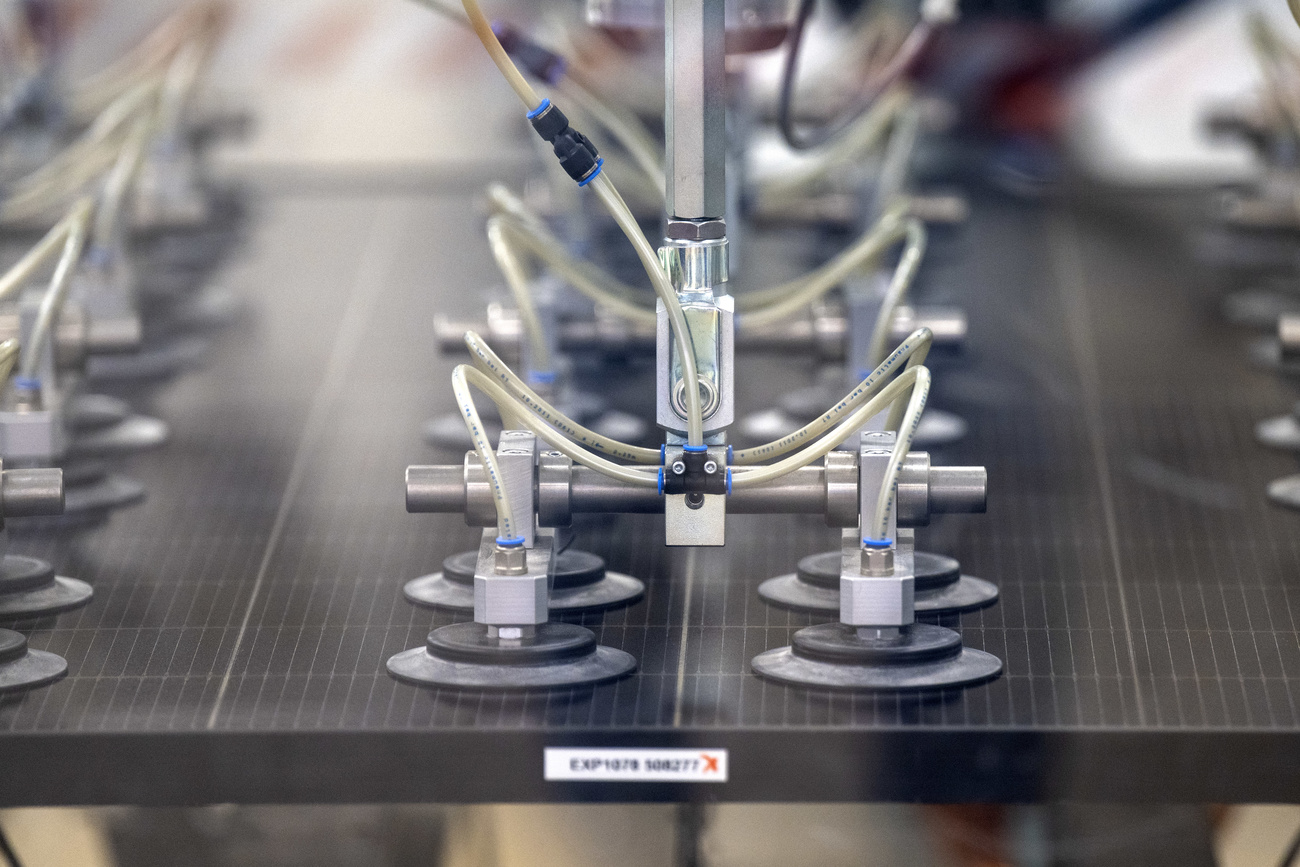
Stock Bulls Drive S&P 500 to Brink of Record High: Markets Wrap
(Bloomberg) — Wall Street’s renewed push toward all-time highs saw stock investors setting aside recent geopolitical fears amid hopes that a resumption of Federal Reserve rate cuts will fuel the outlook for the economy and Corporate America. Treasury yields fell alongside the dollar.
A nearly $10 trillion surge in the S&P 500 from the edge of a bear market put the gauge briefly above its Feb. 19 closing peak of 6,144.15. The benchmark ended just shy of that mark at 6,141.02. Big tech led gains. Banks climbed as a veteran analyst said that as long as there’s no recession, it’s “game on” for the shares. A closely watched gauge of stock volatility – the VIX – slid to 16.59 after topping 52 at the height of April’s tariff-fueled turmoil.
Subscribe to the Stock Movers Podcast on Apple, Spotify and other Podcast Platforms.
“The stock market is back at record highs as various uncertainties start to fade,” said Paul Stanley at Granite Bay Wealth Management. “The market is betting on continued progress on trade, and a de-escalation of tensions in the Middle East is giving investors confidence.”
Bonds climbed after economic data releases reinforced bets that the Fed will slash rates at least twice this year. Traders are already fully pricing in two cuts by year-end, starting in September, and wagers on a third reduction could gain momentum if next week’s jobs report is weak. A dollar gauge closed at the lowest since 2022.
Consumer spending grew in the first quarter at the weakest pace since the onset of the pandemic. As a result, gross domestic product slid at a downwardly revised 0.5% annualized rate. Recurring applications for unemployment benefits rose to the highest since 2021 – but initial claims fell.
“The economy is slowing, but remains resilient,” said Chris Larkin at E*Trade from Morgan Stanley. “While the numbers as a whole don’t necessarily make a compelling case for bulls or bears, for the time being, the market appears fixated on tech strength and the S&P 500’s potential return to record levels.”
Read: Treasury Deal Halts ‘Revenge Tax’ That Spooked Wall Street
Read: US, China Have Finalized Tariff Understanding, Lutnick Says
While it’s very encouraging to see stocks back near record highs, there are plenty of questions on the next catalyst needed to propel the market further from here, according to Stanley at Granite Bay Wealth Management.
“In mid-July, earnings season begins, and that will act as a more concrete gauge on how companies have grappled with tariff uncertainty during the months of April and May, which were months with extreme headline risk,” he said. “The biggest risk right now isn’t missing out — it’s overreacting to short-term news, which could cause harmful investing mistakes.”
To Bret Kenwell at eToro, investors want to see two things come out of the second quarter: Better-than-expected earnings growth and a rebound to positive annualized GDP growth.
“If the latter is achieved, the US will avoid the technical definition of a recession,” Kenwell said. “Further, if management tells a good story about the consumer and current business trends, it should give investors further reassurance.”
As the US stock market nears a fresh all-time high, retail investors are piling into equities. The group purchased a net $3.2 billion of stocks in the five-day period through Wednesday’s close, according to data compiled by JPMorgan Chase & Co.’s Emma Wu.
Investors are rushing into speculative and volatile edges of the stock market. The Invesco S&P 500 High Beta ETF, tracking highly volatile stocks, is on pace for its best quarter since 2020 relative to the Invesco S&P 500 Low Volatility ETF.
With tech stocks powering the market, technical analysts see the makings of a pullback in the coming months unless more sectors join the rally. The equal-weighted version of the S&P 500 is about 4% below its record touched in November.
Stock volatility is likely to remain higher in the second half of the year, according to Goldman Sachs Group Inc. strategists. The team led by Andrea Ferrario says stagflationary shocks remain a key risk for balanced portfolios amid tariff-induced inflation risks.
A flurry of Fed officials this week made clear they’ll need a few more months to gain confidence that tariff-driven price hikes won’t raise inflation in a persistent way.
In an interview on Bloomberg Surveillance, San Francisco Fed chief Mary Daly acknowledged she’s seeing increasing evidence that tariffs may not lead to a large or sustained inflation surge. But that merely made her open to a rate cut “in the fall.”
Richmond Fed President Tom Barkin said he expects tariffs will put upward pressure on prices, and the central bank should wait for more clarity before adjusting rates. Fed Bank of Boston President Susan Collins said she sees at least one cut this year, but indicated July would be too early for such a move.
US PREVIEW: Services to Offset Tariff Bump to Core PCE Inflation
Traders also geared up for a fresh inflation reading due Friday.
Economists see the personal consumption expenditures price index excluding food and energy — the Fed’s preferred gauge of underlying inflation — rising 0.1% in May. That would mark the tamest three-month stretch since the pandemic five years ago.
“The market seems to be riding high on hopes inflation is cooling and the Fed can start cutting soon, and a soft PCE print could seal that story,” said Haris Khurshid, chief investment officer at Karobaar Capital. “But if growth doesn’t pick up or earnings disappoint, this rally could run out of steam fast.”
Meantime, a report that President Donald Trump is considering naming Fed Chair Jerome Powell’s successor well before the end of his term also drew investor attention. The Wall Street Journal said Trump may reveal his pick to run the central bank by September or October.
“Messaging from a dovish incoming Chair could potentially overshadow the hawkish skew to Powell’s wait-and-see signals,” said Ian Lyngen and Vail Hartman at BMO Capital Markets.
The Fed is an institution that will continue carrying out its tasks, but if its independence were in question, then the financial markets will quickly protest, Russell Brownback, a portfolio manager at BlackRock Inc., said on Bloomberg Television Thursday.
“I don’t think the independence of the Fed is in jeopardy,” he said. “I think the markets would protest any kind of degradation of that independence very quickly.”
Corporate Highlights:
- Nike Inc. sales surpassed analysts’ expectations, showing the world’s largest sportswear company is recovering as it clears inventory to make way for fresher designs.
- Meta Platforms Inc. is in advanced talks to acquire PlayAI, a small startup using artificial intelligence to replicate voices, part of the social media company’s push to nab top talent and catch up in the AI race.
- Apple Inc. had its price target cut at JPMorgan Chase & Co. to $230 from $240 on the iPhone 17’s incremental lineup launch.
- Micron Technology Inc., the top-performing chipmaker on Wall Street this year, delivered an outlook that wasn’t quite rosy enough to keep its 2025 rally going.
- Salesforce Inc. Chief Executive Officer Marc Benioff said his company has automated a significant chunk of work with AI, another example of a firm touting labor-replacing potential of the emerging technology.
- Coinbase Global Inc. shares closed at the highest level ever, capping off a rally fueled by growing acceptance of the cryptocurrency industry on Wall Street and in Washington.
- The leader of UnitedHealth Group Inc.’s Optum Health care delivery unit has left the role, an early indication of management changes under Stephen Hemsley, UnitedHealth’s new chief executive officer.
- Walgreens Boots Alliance Inc. reported quarterly profit that beat Wall Street’s expectations, a hopeful sign as the pharmacy giant prepares to transform into a private company after its market value plummeted due to retail competition and lower prescription drug payments from insurance companies.
- Impossible Foods Inc. hopes to add its plant-based burgers to European menus this year, bringing to a close a six-year quest to enter the world’s biggest market for meat alternatives.
Some of the main moves in markets:
Stocks
- The S&P 500 rose 0.8% as of 4 p.m. New York time
- The Nasdaq 100 rose 0.9%
- The Dow Jones Industrial Average rose 0.9%
- The MSCI World Index rose 0.9%
- Bloomberg Magnificent 7 Total Return Index rose 1.1%
- KBW Bank Index rose 1.7%
- The Russell 2000 Index rose 1.7%
Currencies
- The Bloomberg Dollar Spot Index fell 0.5%
- The euro rose 0.4% to $1.1707
- The British pound rose 0.5% to $1.3734
- The Japanese yen rose 0.6% to 144.36 per dollar
Cryptocurrencies
- Bitcoin fell 0.3% to $107,533.86
- Ether fell 0.2% to $2,434.57
Bonds
- The yield on 10-year Treasuries declined five basis points to 4.24%
- Germany’s 10-year yield was little changed at 2.57%
- Britain’s 10-year yield was little changed at 4.47%
Commodities
- West Texas Intermediate crude rose 0.8% to $65.44 a barrel
- Spot gold was little changed
©2025 Bloomberg L.P.































